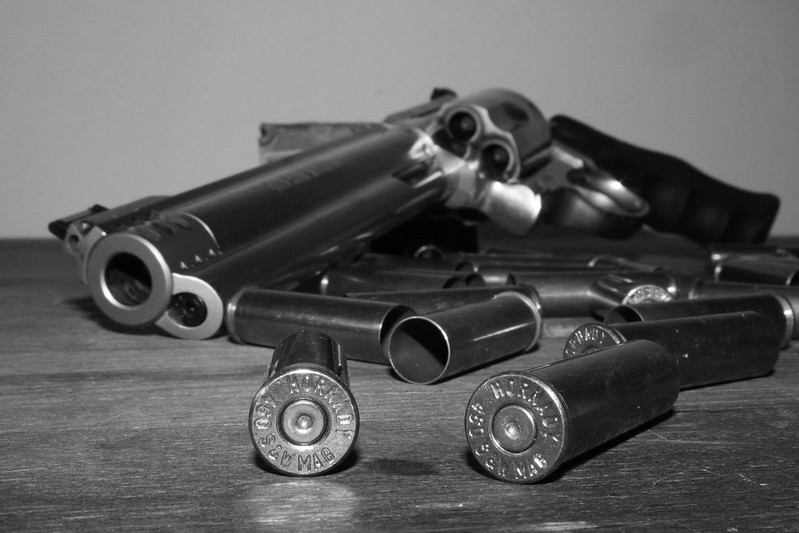This week’s top three summaries: R v Ally, 2022 ONCA 558: #deliberation for 1st degree, R v Badu, 2022 ABCA 267: 24(2) #discoverability, and R v Doering, 2022 ONCA 559: legal #causation of death.
This week's third case deals with causation of death. This is a particularly intricate area of evidence. For great general reference on the law of evidence, I recommend the Emond title below. It is available for purchase now for our readership with a 10% discount code provided below. To purchase, simply click on image below.
R v Ally, 2022 ONCA 558
[July 28, 2022] First Degree Murder - Evidence of Deliberation [Reasons by Simmons J.A. with S.E. Pepall and L.B. Roberts JJ.A. concurring]
AUTHOR’S NOTE: Normal first degree murder requires evidence of both planning and deliberation. While both requirements can be accomplished in a relatively short period of time, there does need to be some evidence of both. Here the ONCA ruled that this route to conviction should not have been left with the jury. Evidence of animus or prior threats is not sufficient to find that there was any deliberation. An inference of planning and deliberation should not be drawn on evidence that merely supports an intention to kill.
A. Introduction
[2] The appellant met Ms. Newland at a youth shelter in the late summer of 2012. They had a tumultuous on-again-off-again relationship for a few months that included many fights, some of which turned physical. On the morning of November 16, 2012, the appellant placed Ms. Newland in a choke hold, as a result of which she died.
[3] During a Mr. Big investigation, the appellant acknowledged killing Ms. Newland. He was subsequently charged with first degree murder.
[4] ...As a secondary position, the Crown alleged that the murder was planned and deliberate, being the culmination of the appellant’s threats to kill Ms. Newland if she ever left him.
[7] Before leaving Ms. Newland’s room, the appellant scattered her medication on the floor and used her nail polish to paint “I MISS U” on her forearm. He later withdrew around $300 from her bank account. When subsequently interviewed by police, the appellant claimed Ms. Newland was alive when he last saw her, and he denied any involvement in her death.
[12] I would accept the appellant’s submission that there was no air of reality to the Crown’s theory of planned and deliberate first degree murder....
B. Background
(1) The appellant’s background and relationship with the deceased
[18] The appellant and the deceased met at Eva’s Place in late August or early September 2012. The two began a relationship about a week later. Ms. Newland was also unemployed and sleeping regularly at the shelter at the time.
(2) Evidence of the nature of the relationship between the appellant and the deceased
(3) Evidence of ante mortem statements by the deceased about the appellant’s threats
He’s hitten me / Plz / Come / Ge / Mee / He’s gun kill meA if yu dony hurry iswear
[25] Steven Wilson, the deceased’s social worker, testified that on November 5, 2012 the deceased told him that during a recent fight the appellant threatened to kill her and himself if she left him.
(4) Events leading up to the killing
(5) The evidence about the events of November 15-16, 2012
(a) The appellant’s Mr. Big statement
- all of that “clicked in [his] head” – he “grabbed her up and then ... took her breath for trying to take [his]”.
(b) The appellant’s evidence at trial
[34] The appellant rolled over as the two of them fell and ended up behind the deceased, holding her in a choke hold position. The deceased was flailing and kicking. The appellant saw her knock at the wall or a dresser. The appellant told her to chill. He loosened his grip when he felt her slow down. The deceased stood up quickly and moved towards the door.
[35] The appellant lost hold of the deceased briefly when she stood up. But then he “snapped”. He explained it was a reaction. He thought she might grab something or call a neighbour. In cross-examination, he did not dispute that she could have alerted her neighbour downstairs, the people upstairs or the police. He followed behind the deceased, taking about a step and a half. He then grabbed the deceased around the neck with two hands and threw her to the ground. He ended up with his right knee between the deceased’s legs, his left leg outside her legs and his forearm on her throat in a choke hold. The appellant let go when the deceased “gave way” or gave the appearance of being unconscious.
[37] The appellant testified he thought the deceased would get up, but two minutes went by, and nothing happened. He then wrote on her arm and scattered her pills around to make it look like a suicide.
C. Analysis
(1) Planned and deliberate first degree murder
(a) General Principles
(c) Discussion
[54] I accept that, in most cases, evidence of both planning and deliberation will be circumstantial rather than direct: Robinson, at para. 36.
[57] However, it is unnecessary for me to finally determine that issue. Even assuming there was evidence capable of supporting a finding that the murder was planned, there was no evidence of deliberation. That is, there was no evidence capable of supporting a conclusion that, upon being informed of the deceased’s refusal to attend the job-search program and her advice that he could leave if he did not like it, the appellant took the time to deliberate –- i.e., to recognize that the condition on which his “plan” was premised had come to fruition and to weigh the pros and cons of implementing his alleged plan.
A lay jury, unaccustomed to the sometimes subtle distinctions drawn in the criminal law among various culpable mental states, might move quickly from a finding that the appellant [formed an intent to kill], to a finding that the appellant had planned to [kill]. Looking at the evidence "through the lens of judicial experience", an appeal court must have regard to the real risk that evidence demonstrating the intention to commit murder ... could be improperly treated by a jury as equally cogent evidence of planning, if not deliberation.
A finding that the appellant decided seconds or a few minutes before inflicting the harm, to intentionally inflict bodily harm knowing that death was likely to ensue, is not the same as concluding that the appellant planned and deliberated upon the attack before commencing that attack. To borrow the language of the case law, there has to be evidence from which a jury could reasonably infer that the appellant’s attack on [the deceased] was the product “of a calculated scheme”, arrived at after weighing “the nature and consequences” of that scheme. In addition to evidence of planning, there had to be evidence that having made the plan, the appellant “deliberated”, that is weighed the pros and cons of putting the plan into action. [Emphasis added.]
Q. The reason you didn't think she was going to survive, sir, is because you had set out to ensure she did not survive. She had disrespected you. She made you angry. She made you hate her. She gave you the ultimate disappointment - you weren't going to move in together. And you took this opportunity to make her pay for it. Is that not what happened on that day, sir?
A. I do not agree, sir.
Q. No. Your recollection is it just happened. It just happened, right sir?
A. Yes, sir.
Q. It just happened that this adult woman saying she doesn't want to wake up, ends up on the ground, with your forearm on her neck. It just happened, right?
A. Yes sir, a loss.
Q. It just happened that when you finally release her and she moves towards the door, you pull her back and you finish her off. That just happened, right sir?
A. No matter how you word it, yes sir, that is what I mean. It just happened and that was a reaction. Toeverything sir, like you said, yes sir it was a reaction. After everything done, everything that was happening at that current moment, yes sir, it was a reaction but it just happened.
Q. It happened when you realized that all your plans had fallen apart, right sir? And you reacted then, is that right?
A. It's not like I was meditating on my plans, sir. My goal was to get her to the program which would have helped us financially. You know, we're together. We help each other.
Q. She wasn’t going to be good at the program if she wasn’t living, right sir? That wasn’t your goal.
A. Either [way] you phrase it, sir. I’ll still answer your question and it’ll be to the same effect.
[62] It was, of course, open to the jury to reject some or all of the appellant’s evidence. However, to the extent that the jury may have rejected some portion of his evidence, in my view, at least in relation to deliberation, they would have been left in an evidentiary vacuum.
...This court rejected the appellant’s submission on appeal that the jury’s questions related to whether the appellant could have planned and deliberated murder as he stood on the homeowner’s doorstep. That theory was not put to the jury.
[67] Assuming the evidence of animus and threats to kill in this case supported a finding of a plan to kill, as I have said, there was no evidence capable of supporting a finding of deliberation.
D. Disposition
R v Badu, 2022 ABCA 267
[August 10, 2022] Charter s.24(2) - Discoverability [Majority: Ritu Khullar and Anne Kirker JJ.A., Concurring in Part: Thomas W. Wakeling J.A.]
AUTHOR’S NOTE: Discoverability of evidence in the 24(2) context refers to the idea that the evidence would have or could have been seized by the police without their breach of Charter rights. Some courts use this concept to reduce the seriousness and impact of the breach. Effectively, they say it was only a technical breach because the police could have easily obtained it lawfully. However, this logic is problematic. The ABCA refers to the case law that describes discoverability as something that cuts both ways. If there is a Charter-compliant way to seize evidence, then it seems even more problematic that he police did not take that route. The more deliberate the Charter violation (ie. the obviousness of the Charter-compliant route) the more serious the violation. Consequently, discoverability is remains a concept that cuts both ways. It appears that this a principle of law that can be bent to the will to court depending on their view of the violation. Here, the ABCA view caused a new trial. All defence counsel can do is point to the case law that suggests discoverability enhances the seriousness of Charter violations.
The Majority:
[1] The appellant, Mr Badu, appeals his conviction for importing cocaine and possessing cocaine for the purposes of trafficking contrary to ss 6(1) and 5(2) of the Controlled Drugs and Substances Act, SC 1996, c 19. At trial, the Crown conceded that the police had breached some of Mr Badu’s Charter rights, but the trial judge admitted the impugned evidence (results of searches of a residence and a cell phone) concluding that doing so would not bring the administration of justice into disrepute under s 24(2) of the Charter. Mr Badu appeals the s 24(2) analysis and asks this Court to exclude the impugned evidence.
[2] For the reasons below, the appeal is granted, and a new trial is ordered.
I. Background
[3] On February 28, 2012, a Canadian Border Services Agency officer in Mississauga, Ontario intercepted a parcel from Panama which was to be delivered to Mr Badu at a residence at Templeson Crescent in Calgary. Upon examination, the officer determined that the parcel contained 1.9 kg of cocaine concealed in sporting equipment.
[4] The RCMP was notified and officers made a plan to conduct a controlled delivery of the parcel. RCMP officers obtained a general warrant on March 2, 2012 which, among other things, permitted the police to install a trigger alarm on the parcel to alert them when the package was opened, and to permit delivery of the parcel by an officer dressed as a Canada Post worker. Significantly, the warrant only authorized entry into the Templeson residence upon the satisfaction of one of two pre-conditions: 1) the trigger alarm on the parcel was activated or 2) eight hours had elapsed since the delivery of the parcel.
II. The Trial
[7] As indicated, the Crown conceded that Mr Badu’s Charter rights were violated in the following ways:
1. His s 8 rights were breached when the RCMP entered and searched the Templeson residence without complying with the conditions on the warrant;
2. His s 8 rights were breached when the RCMP searched his cellphone in that the search did not meet the standard set by the Supreme Court of Canada in R v Fearon, 2014 SCC 77, which was released two years after the search occurred; and
3. His s 10(b) rights were breached because police delayed his access to a lawyer following his arrest at 3:41 pm until 10:59 pm, a period of just over seven hours.
4. His s 10(b) rights were breached when an RCMP officer questioned him in relation to the investigation, after he had invoked his right to counsel, but before being allowed access to counsel. However, the Crown did not seek to rely on any statements made by Mr Badu.
[8] With those breaches conceded, the task before the trial judge was to consider whether the evidence obtained should still be admissible pursuant to s 24(2) of the Charter....
[9] Applying these factors, the trial judge admitted the evidence. She concluded that none of the conceded breaches were serious, the impact on Mr Badu’s rights was minimal and society had a high interest in adjudicating the drug charges on their merits. The trial proceeded.
[10] The trial judge found that the Crown had established on the criminal standard of proof that Mr Badu knew that the parcel contained a controlled substance and was being imported from outside Canada, or was wilfully blind to those facts. She also found that he was in possession of the cocaine for the purpose of trafficking it. Accordingly, the trial judge convicted Mr Badu of the importing the cocaine and possessing it for the purpose of trafficking.
III. Issues on Appeal
[12] In relation to the s 8 breach committed by searching the home without authorization by a search warrant, Mr Badu argues that the trial judge erred in principle by:
1. Finding that the breach was not serious because the evidence seized from the home would have been “discoverable” by a lawful search; and
IV. Analysis
B. Errors regarding s 8 breach
[20] As noted, Mr Badu alleges that the trial judge’s s 24(2) analysis of the unlawful search of the home was vitiated by two errors of principle – finding that the breach was not serious because the evidence seized from the home was “discoverable” and understating its impact on Mr Badu’s privacy interests in his home.
i. Finding that the breach was not serious because the evidence was “discoverable”
[22] The trial judge found that the seriousness of this s 8 breach was mitigated because the evidence seized from Templeton Crescent residence would have been “discoverable” by police and that they could have obtained the evidence while still being Charter compliant. Although the “discoverability” of evidence by constitutional means may sometimes reduce the seriousness of a breach in the s 24(2) analysis, as in R v Côté, 2011 SCC 46 at para 66, it was an error to conclude that it did here.
[23] The warrant permitting a search of the Templeson residence set out two alternative conditions, at least one of which had to be met before the residence could be searched. Either the alarm had to be triggered indicating that the parcel had been opened, or eight hours had to have elapsed from the delivery of the parcel. Instead, just after the parcel had been delivered to Mr Badu, Mr Badu was arrested. And within a few minutes of his arrest, the Templeson residence was searched. Eight hours had not elapsed and the alarm had not been triggered.
[24] The trial judge found that the evidence seized from Mr Badu’s residence could have been obtained by a lawful search. If the police had applied for an unconditional warrant to search the home, they would have obtained one and obtained the evidence lawfully:
In other words, the trial judge concluded that the unlawful search of the home was not very culpable because police could have searched it lawfully if they had chosen to do so.
[25] The trial judge’s reasons disclose errors of principle in the circumstances. The relevant circumstances were that all of the police officers involved in the search of the home acknowledged that they had read the warrant and understood the conditions. None provided an explanation at trial of why they ignored the conditions in the warrant and proceeded to search the house almost immediately upon arrest.
[26] One error is that the circumstances demonstrate that, at the very least, the s 8 breach was not in good faith. A reasonable police officer in the circumstances would have known the conditions of the warrant (which were clear), that the conditions were not satisfied (eight hours not having passed and the alarm not having gone off) and that, as a result, police lacked lawful authority to search the home...
[27] Some facts indicate that the breach was a known, deliberate breach. The police officers who carried out the search reviewed the warrant and yet did not comply with the conditions. That creates a possible inference that officers knew that they lacked authority to search the home in the circumstances. The trial judge did not make that finding because “there [was] limited evidence as to why the officers did not turn their minds to whether a subsequent warrant would be required”. We are similarly constrained by the record.
[28] The other, related error is more directly about the effect of “discoverability” on the seriousness of a breach. Discoverability does not always lessen the seriousness of a Charter breach. It can cut both ways. Sometimes, the fact that police could have conducted a search in a Charter conforming way, but did not, displays a casual attitude towards the Charter limits on their investigative powers: Côté at paras 66-67; Del Corro. That is the only reasonable characterization of the facts here. The breach was more serious, not less, because police ignored, or were indifferent to, their actual authority to conduct the search.
[29] In short, the fact that the police could have obtained an unconditional warrant to search the home does not alter the fact that the breach was not in good faith. The search demonstrated indifference to the limits of police investigative powers. The police did obtain a warrant and then chose to ignore it. This was seriously culpable state misconduct.
ii. Understating the impact of the breach on Mr Badu’s privacy interest in his home
[31] The trial judge did not evaluate, even in outline, the extent of people’s privacy interest in their homes. The only comment touching on this general topic was that “the search of a computer [involves] ... privacy interests ... of the highest order”. Nothing was said about privacy interests in the home. A possible implication of the reasons is that privacy interests in a home are less exacting than privacy interests in the information on one’s computer.
[33] ...The Supreme Court recently reiterated in R v Stairs, 2022 SCC 11 at paras 49 and 51, the very high expectation of privacy people have in their homes:
[49] This Court has emphasized time and again that a person’s home attracts a high expectation of privacy. A fundamental and longstanding principle of a free society is that a person’s home is their castle (Eccles v. Bourque, [1975] 2 S.C.R. 739, at pp. 742-43, per Dickson J. (as he then was), citing Semayne’s Case (1604), 5 Co. Rep. 91a, 77 E.R. 194, at p. 195). The home is “where our most intimate and private activities are most likely to take place” (R. v. Tessling, 2004 SCC 67] 3 S.C.R. 432, at para. 22). Moreover, this Court recognized in R. v. Silveira, [1995] 2 S.C.R. 297, at para. 140, per Cory J., that “[t]here is no place on earth where persons can have a greater expectation of privacy than within their ‘dwellinghouse’”.
[34] Stairs indicates that any search of a person’s home interferes with a high expectation of privacy. Searches invade someone’s privacy interest to a greater or lesser extent depending on the extent of the search. Here, there is very little information in the record about which locations in the house were searched, apart from the trial judge’s finding that some records were found in Mr Badu’s bedroom. The fact that police “only” searched for items authorized by the warrant does not diminish the intrusiveness of the search. The trial judge considered the search only a modest interference with Mr Badu’s privacy interest in his home because it lasted 30 minutes or less. The impact on Mr Badu’s privacy interest would have been greater if the search had gone on longer but that does not warrant the conclusion that what occurred was a limited invasion of that interest.
[36] Nevertheless, the trial judge’s overall conclusion that the unauthorized search of Mr Badu’s home had a limited impact on his s 8 protected privacy interest reflects an error of principle and is an unreasonable finding given the evidence.
C. Errors regarding breaches of s 10(b)
ii. Officer safety and evidence preservation concerns
[47] The trial judge’s reasoning discloses an error in principle. The police had only a general concern about officer safety and preservation of evidence, a concern present in any drug investigation, whenever a person is detained for drug offences before the police search another location. As this Court has stated, “concerns of a general or non-specific nature applicable to virtually any search cannot justify delaying access to counsel”: R v Russell, 2020 ABCA 90 at para 19. The Ontario Court of Appeal has made the same observation when it said the cases thus far:
[E]mphasized that concerns of a general or non-specific nature applicable to virtually any search cannot justify delaying access to counsel. The police may delay access only after turning their mind to the specifics of the circumstances and concluding, on some reasonable basis, that police or public safety, or the need to preserve evidence, justifies some delay in granting access to counsel. Even when those circumstances exist, the police must also take reasonable steps to minimize the delay in granting access to counsel.
R v Rover, 2018 ONCA 745 at para 27.
[51] In summary, the belief that officer safety would be imperilled or evidence destroyed if Mr Badu were allowed to consult counsel before the search of the Pinebrook Place residence was not based on any facts specific to this investigation. It was not a reasonable belief. The trial judge held this was not a bad faith breach of s 10(b) and we do not disagree. But Charter infringing conduct based on an unreasonable belief that the conduct is lawful is not a good faith breach either: Del Corro at paras 65-66. Beyond that, the sheer length of the unjustified delay between the detention of Mr Badu and allowing him to contact counsel marks this out as a serious breach of Charter rights.
iii. Impact of delay on Mr Badu’s s 10(b) protected interests
[52] This ground of appeal concerns the causal link, or lack of one, between the breach of 10(b) and evidence tendered by the Crown at trial. More specifically, it is about the significance under s 24(2) of the fact delaying Mr Badu’s access to counsel for seven hours did not result in the police obtaining the cell phone evidence tendered at trial.
[53] Whether a particular breach of the Charter caused the police to acquire evidence later introduced at trial can be relevant at two points in a s 24(2) analysis. First, whether s 24(2) is engaged at all – is there a sufficient connection between the breach and the evidence such that, in principle, it is possible to exclude the evidence under s 24(2)? Second, when s 24(2) is engaged, the existence of a causal connection between the Charter breach and evidence obtained can affect how severely the breach impacted the accused’s Charter protected interests.
[55] The Supreme Court recently clarified the proper approach to the “obtained in a manner” in R v Tim, 2022 SCC 12 at para 78. For our purposes, the main point is that the connection between the Charter breach and the impugned evidence can be “temporal, contextual, causal or a combination of the three”: Tim at para 77, point 4; Mian at para 83; R v Wittwer, 2008 SCC 33 at para 21.
[56] The trial judge applied the “temporal, contextual or causal” criterion, finding that the cell phone evidence was “obtained in a manner” that breached Mr Badu’s s 10(b) right to consult counsel, even though the delay did not cause the police to acquire the cell phone evidence, or any other evidence. She held that there were sufficient temporal and contextual connections between the breach and the cell phone evidence. The breach of s 10(b) took place on the same day, March 5, 2012, as all the other conduct in breach of the Charter. There has been no challenge to this conclusion.
[59] For most cases involving a s 10(b) breach involving a delay in access to counsel, where the detainee does not say anything that leads to the police obtaining evidence, that analysis at the second stage of Grant is sufficient. However, there is another s 10(b) interest at play in some cases:
The right to counsel is a lifeline for detained persons. Through that lifeline, detained persons obtain, not only legal advice and guidance about the procedures to which they will be subjected, but also the sense that they are not entirely at the mercy of the police while detained. The psychological value of access to counsel without delay should not be underestimated.
R v Dussault, 2022 SCC 16 at para 56, agreeing with the Ontario Court of Appeal’s statement in R v Rover, 2018 ONCA 745 at para 45; see also R v Tremblay, 2021 QCCA 24 at para 40; R v Griffin, 2021 ONCA 302 at para69.
[60] Few s 10(b) cases engage this aspect of the accused’s s 10(b) protected interest, but the facts of this case did. Mr Badu was denied access to counsel for seven hours and placed in a police cell for most of that time, without any explanation (even in general terms) of why access to counsel was refused, or any indication of when he might be allowed to speak to counsel or someone else. He was 21 years old at the time and had no previous involvement with the criminal justice system. The denial of access to counsel for so long without any explanation or communication about it, impaired Mr Badu’s interest in being provided his constitutional “lifeline.”
iv. Questioning Mr Badu in the police vehicle
[63] When a suspect has been detained and asserts the right to counsel, the police have a duty under s 10(b) to hold off questioning the suspect until the detainee has been given a reasonable opportunity to consult counsel: R v Prosper, [1994] 3 SCR 236 at 269, 118 DLR (4th) 154; Sinclair at para 27. The police officer breached that duty by questioning Mr Badu in the police vehicle on the way to the detachment.
[64] On appeal, Mr Badu challenges the trial judge’s assessment of the seriousness of that breach and its impact on Mr Badu’s s 10(b) protected interests in her s 24(2) analysis. With respect to seriousness, the trial judge held that the breach was not bad faith conduct because the officer did not initiate the conversation, the questioning was not aggressive, and the officer reminded Mr Badu of his right to consult counsel. She also found that it did not seriously impact Mr Badu’s s 10(b) protected interests because, although the questioning yielded information that enabled police to identify evidence during the later search of the cell phone, the officer would probably have read the text messages anyway; so, the breach did not result in the police obtaining any extra evidence.
[65] The trial judge’s assessment of the seriousness and impact of this breach discloses reviewable errors.
[67] The impact of the breach on Mr Badu’s central s 10(b) interest in making an informed decision about whether to speak to police was not trivial. Mr Badu answered the officer’s questions and the police used those answers to identify text messages later tendered as evidence. The trial judge reasoned that the text messages were “discoverable”– the police probably would have identified the text messages even if the officer had not questioned Mr Badu contrary to s 10(b). As noted, in appropriate circumstances, the fact that evidence could have been obtained by Charter compliant conduct can mitigate the impact of the breach on protected interests: Cole at 93; Côté at para 72. However, here, the text messages were not “discoverable” by constitutionally legitimate means. Police exceeded their common law authority to search incident to arrest when they searched Mr Badu’s cell phone and found the text messages. There was no suggestion, at trial or on appeal, that the police could have lawfully searched the cell phone, consistently with Fearon, in the circumstances that existed.
[68] Ultimately, questioning in breach of s 10(b) resulted in police obtaining evidence used at trial. The trial judge erred by minimizing the seriousness and impact of this breach.
D. Fresh s 24(2) analysis
[69] Given the errors in the trial judge’s analysis of s 24(2), the appropriate response is to conduct a new 24(2) analysis: Tim at para 72; Del Corro at para 56. Where there are multiple, discrete Charter breaches, the s 24(2) analysis must assess the breaches cumulatively: R v Reilly, 2021 SCC 38. An accused does not experience the breaches separately but as part of an ongoing interaction with police.
i. Seriousness of the Charter Infringing Conduct
[70] The breach of s 8 in searching the Templeson residence, without legal authority, was culpable and serious. The officers who reviewed the warrant acknowledged they understood the conditions yet failed to abide by them. The breach was not in good faith and evinced a casual attitude to the limits of officers’ legal authority to search the residence.
[72] The breach of section 10(b) when police asked Mr Badu questions after he invoked his right to counsel was also culpable and serious. Though the conduct did not amount to bad faith, a reasonable police officer in the circumstances would have realized he or she had a duty under s 10(b) to hold off questioning Mr Badu until he had an opportunity to speak with counsel.
[73] The s 10(b) breach in delaying access to counsel for seven hours was also serious. Its seriousness was not mitigated by concerns about officer safety and evidence preservation because these concerns were not specific to the actual investigation. Its seriousness was aggravated by the sheer length of the delay in affording Mr Badu access to counsel.
[74] In total, there were four separate Charter breaches, three of which were serious and not in good faith. Taken together, these breaches exhibit culpable conduct and a rather casual attitude towards Mr Badu’s Charter rights. The first branch militates against admission.
ii. Impact on Mr Badu’s Charter Protected Interests
[75] The unauthorized search of the Templeson residence was a significant intrusion of Mr Badu’s privacy interests. The home attracts a high expectation of privacy which is clearly reflected in the Criminal Code and s 8 case law: Stairs at paras 49-51.
[77] The s 10(b) breach in asking questions during the “hold off” period had a non-trivial effect on the accused Charter-protected interests. The questioning resulted in police identifying text messages that were tendered as evidence at trial. This breach impaired Mr Badu’s s 10(b) interest in making a legally informed decision about whether to speak to the police.
[79] In summary, the three Charter breaches seriously affected Mr Badu’s Charter-protected interests and this strongly militates against the admission of the cell phone evidence and the evidence obtained from the search of the Templeson residence.
iv. Balancing the Factors
[83] Taken cumulatively, three of the four Charter breaches were serious and significantly impaired Mr Badu’s Charter-protected interests. The first two stages of the Grant inquiry weigh strongly in favour of excluding the impugned evidence. Though the third branch favours admission, this finding cannot turn into a “rubber stamp” for including evidence: Le at para 142. Courts have reiterated that “[w]here the first and second inquiries, taken together, make a strong case for exclusion, the third inquiry will seldom if ever tip the balance in favour of admissibility”: Le at para 142; R v Lafrance, 2022 SCC 32 at para 90.
[84] In conclusion, the Court should disassociate itself from these serious Charter breaches. A reasonable, informed person would conclude that admitting the evidence obtained from searching the Templeson residence and the cellphone would bring the administration of justice into disrepute.
V. Disposition
[85] The appeal is granted. The evidence obtained from the searches of the cell phone and the Templeson residence is excluded under s 24(2) of the Charter. We order a new trial.
R v Doering, 2022 ONCA 559
[July 28, 2022] Causation of Death [Reasons by Doherty J.A. with Fairburn A.C.J.O. and David M. Paciocco J.A. concurring]
AUTHOR’S NOTE: Legal and factual causations are two different things. Factual causation occurs when one can answer that but for the conduct of the accused, the death would not have resulted. This is insufficient to establish legal causation in a criminal trial. Legal causation requires the act of the accused to be a significant contributing cause to the death. Here, the accused police officer's failure to obtain medical treatment for the deceased while she was in his custody contributed to her passing away after she had ingested a toxic level of methamphetamine. Experts opined if there was earlier medical intervention, the deceased "might have" survived. The ONCA set out that "In criminal law, causing a risk of death cannot be equated with causing death." An increase, to some unknown degree, of the risk of death is not sufficient.
Overview
[2] The appellant arrested Ms. Chrisjohn on an outstanding warrant in the early evening of September 7, 2016. Ms. Chrisjohn had ingested what turned out to be a toxic level of methamphetamine. She was obviously significantly impaired. About an hour later, the appellant turned Ms. Chrisjohn over to the Ontario Provincial Police (“OPP”), who had obtained the warrant on which she had been arrested. The OPP officers drove Ms. Chrisjohn to the OPP local lockup. About 40 minutes later, Ms. Chrisjohn was examined by Emergency Medical Services (“EMS”) personnel. They took her to the hospital. Ms. Chrisjohn died less than an hour later of a heart attack brought on by “methamphetamine toxicity”.
[8] The trial judge made a finding of guilt on both counts. She summarized her findings at paras. 131-32 of her reasons:
I am further satisfied that, in providing the OPP with erroneous and incomplete information about Ms. Chrisjohn’s condition, Cst. Doering demonstrated a wanton and reckless disregard for Ms. Chrisjohn’s life. His conduct created a risk that medical assistance would be even further delayed. It represented a marked and substantial departure from the standard of care. It was a contributing cause of Ms. Chrisjohn’s death and grounds culpability, under s. 219 of the Code, for criminal negligence causing death.
The Conviction Appeal
B. The Criminal Negligence Causing Death Charge
[103] When Constable Billing and Constable McKillop assumed custody of Ms. Chrisjohn, they were responsible for monitoring her condition and providing medical assistance if that assistance was necessary to protect Ms. Chrisjohn’s health or safety. Constable Billing agreed that Ms. Chrisjohn’s condition worsened noticeably between the time they left Tim Hortons and the time they arrived at the OPP station. Nonetheless, both Constable Billing and Constable McKillop testified they did not believe Ms. Chrisjohn needed medical attention when they removed her from their vehicle and took her into the OPP police station. By that time (7:11 p.m.), Ms. Chrisjohn was, according to the Agreed Statement of Facts, in critical condition. Constables Billing and McKillop had to physically remove Ms. Chrisjohn from the cruiser and effectively carry her into the station. Ms. Chrisjohn’s colour was “off” according to Constable McKillop.
[105] EMSarrivedattheOPPstationat7:36p.m.Ms.Chrisjohnwasunconscious in the cell. Her heartrate was 171 beats per minute and her eyes were opened and dry, indicating she had not been blinking. Ms. Chrisjohn was assessed at a three on the Glasgow Coma Scale. Three is the lowest possible measurement on that scale. EMS rushed Ms. Chrisjohn to the hospital, arriving at 7:58 p.m. She died less than an hour later.
(iii) The elements of the offence of criminal negligence causing death
- the appellant deliberately misled the OPP officers as to Ms. Chrisjohn’s condition at the time of the transfer of custody;
- the appellant’s conduct in deliberately misleading the OPP officers showed a wanton or reckless disregard for the life or safety of Ms. Chrisjohn;
- the appellant’s conduct in deliberately misleading the OPP officers represented a marked and substantial departure from the conduct of a reasonably prudent police officer in circumstances in which the appellant either recognized the obvious risk to Ms. Chrisjohn’s life and chose to proceed, or gave no thought to that risk; and
- by deliberately misleading the OPP about Ms. Chrisjohn’s condition, the appellant caused her death.
(iv) Grounds of appeal on the criminal negligence charge
(b) Did the trial judge err in finding that the appellant’s criminally negligent conduct caused Ms. Chrisjohn’s death?
Cst. Doering’s statements created the risk that the OPP would not appreciate the gravity of Ms. Chrisjohn’s condition, and that medical assistance would be even further delayed. This increased the risk to Ms. Chrisjohn’s life and represented a wanton and reckless disregard for her wellbeing. I am satisfied that this conduct was a marked and substantial departure from the standard of care of a reasonably prudent police officer.
(ii) Arguments on appeal
[134] Factual causation is concerned with the mechanical, scientific or medical cause of a certain event. A determination of whether “A” caused “B” in the factual sense is usually made by asking whether “B” would have occurred “but for” the existence of “A”. There may be many factual or “but for” causes of a specific event, all of which may contribute in different ways, and to a greater or lesser extent, to the occurrence of the event in issue. Factual causation alone does not justify the imposition of criminal liability: Maybin, at para. 15.
[137] The causation argument advanced at trial and both causation arguments made on appeal come down to the same ultimate question – did the Crown prove beyond a reasonable doubt that the appellant’s actions were a “significant contributing cause” of Ms. Chrisjohn’s death? Counsel’s recharacterization of the argument as going to factual rather than legal causation did not alter the substance of the argument, or the ultimate question to be determined when addressing causation. The different position taken by counsel in oral argument amounted to a claim that the Crown’s case had fallen even further short of proving that the appellant’s conduct was a “significant contributing cause” of Ms. Chrisjohn’s death than counsel had initially argued.
[142] The absence, in the trial judge’s reasons, of any quantification of the risk that may have been created as a result of any delay in Ms. Chrisjohn’s treatment is also understandable in light of paras. 5 and 8 of the Agreed Statement of Facts. Those paragraphs indicate that delay in obtaining medical treatment would negatively impact on Ms. Chrisjohn’s chances of survival. However, it could only be said that had she received medical treatment prior to the arrival of the EMS at the OPP station, she “might have survived”.
- the appellant’s misrepresentations may have caused some unspecified delay in the OPP seeking medical assistance for Ms. Chrisjohn; and
- any delay in providing medical assistance, which may have occurred as a result of the appellant’s misrepresentations, increased, to some unknown degree, the risk that Ms. Chrisjohn would not survive.
[145] In my view, those findings do not permit the conclusion that the Crown had proved beyond a reasonable doubt that the appellant’s misrepresentations were a significant contributing cause of Ms. Chrisjohn’s death.







